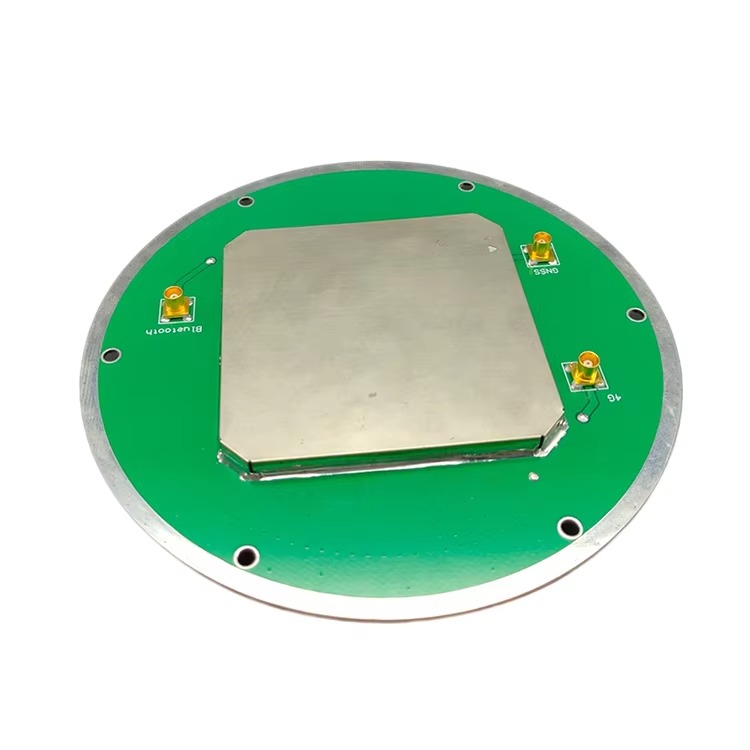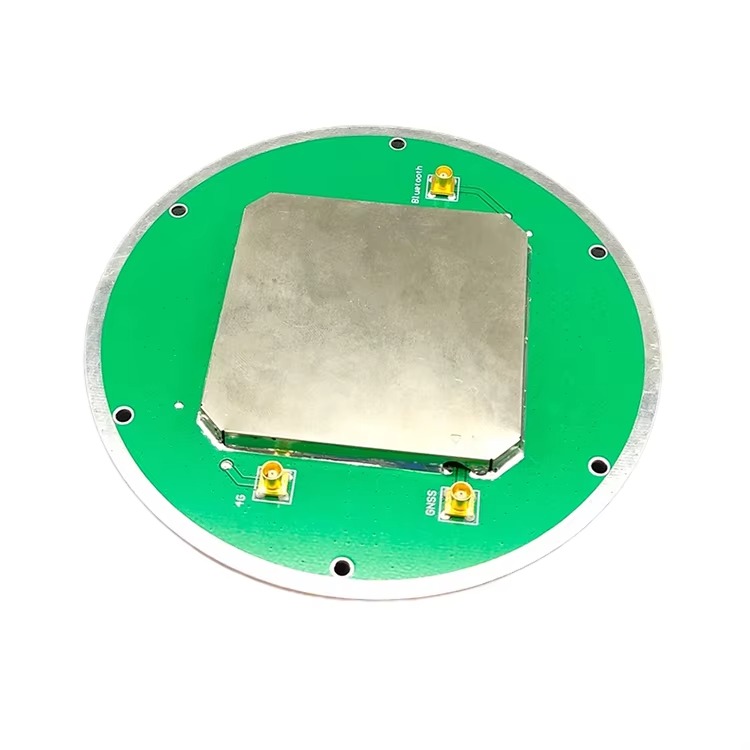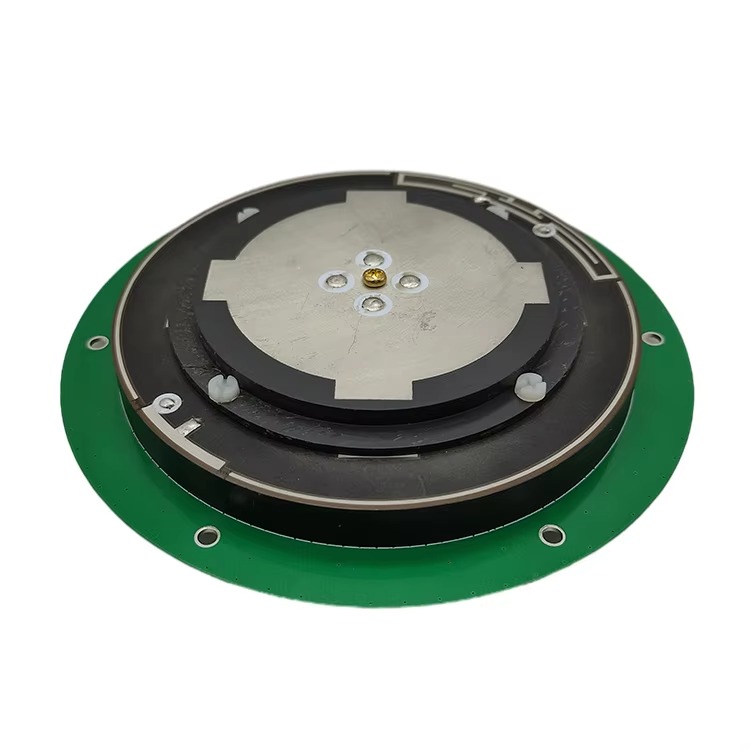The RTK surveying antenna offers several key advantages over conventional GPS antennas, making it the preferred choice for high-precision applications:
Superior Accuracy: By leveraging RTK technology and multi-constellation support, the antenna delivers centimeter to sub-centimeter accuracy, far exceeding the meter-level accuracy of conventional GPS antennas. This level of precision is essential for applications such as construction layout, land boundary surveying, and infrastructure monitoring, where even small errors can have significant consequences.
Real-Time Data: Unlike post-processed GPS systems, which require data to be analyzed after collection, RTK provides real-time positioning data, allowing surveyors to verify measurements on-site. This immediate feedback reduces the risk of errors and allows for quick adjustments, improving efficiency and reducing project timelines.
Enhanced Signal Reception: The antenna’s high gain, RHCP polarization, and multi-frequency support ensure reliable signal reception in challenging environments. Whether operating in urban canyons, dense foliage, or remote areas, the antenna can track enough satellites to maintain precision, reducing the need for time-consuming re-surveys.
Durability and Versatility: The IP67 waterproofing, robust construction, and flexible mounting options make the antenna suitable for use in a wide range of environments, from deserts to marine settings. Its ability to withstand harsh conditions ensures that surveying work can proceed regardless of weather, minimizing delays.
Compatibility: The TNC-K and customized connectors ensure compatibility with a wide range of RTK receivers and surveying equipment, allowing seamless integration into existing workflows. This compatibility reduces the need for new equipment purchases, lowering costs and simplifying adoption.
Future Trends in RTK Surveying Antennas
As technology continues to advance, the RTK surveying antenna is poised to evolve, with several key trends shaping its development:
Increased Constellation Support: With the ongoing expansion of satellite constell ations such as Galileo, NavIC, and QZSS, future RTK surveying antennas will likely support an even broader range of frequencies and constellations. This expansion will further enhance redundancy, ensuring that surveyors can rely on accurate positioning data even if one or more constellations experience temporary outages or signal degradation. For example, Galileo’s advanced signal structure and global coverage will complement existing systems, while NavIC’s focus on the Indian subcontinent will improve performance in that region. By integrating these constellations, RTK antennas will become more versatile, catering to global surveying projects with varying geographic requirements.
Integration of Artificial Intelligence (AI) and Machine Learning (ML): AI and ML algorithms are set to revolutionize RTK surveying by enabling antennas to adapt dynamically to changing environmental conditions. These algorithms can analyze real-time signal data to identify patterns of interference, such as multipath reflections or electromagnetic noise, and adjust the antenna’s performance parameters accordingly. For instance, if the antenna detects increased multipath interference in an urban area, AI could modify the gain pattern to suppress reflected signals, improving accuracy. ML models could also learn from historical data to predict signal behavior in specific locations, allowing the antenna to pre-emptively optimize settings for known challenging environments, such as dense forests or coastal regions.
Miniaturization and Increased Portability: While the current RTK surveying antenna (90*35 mm) is already compact, ongoing advancements in materials and manufacturing will likely lead to even smaller designs without sacrificing performance. Miniaturization will make the antenna more portable, reducing the physical burden on surveyors who often carry equipment for extended periods. This trend will also enable integration into smaller devices, such as drones or handheld surveying tools, expanding the range of applications. For example, miniaturized RTK antennas mounted on drones could facilitate high-precision aerial mapping of large areas, combining the flexibility of drone technology with the accuracy of RTK.
Enhanced Power Efficiency: As surveying equipment becomes increasingly battery-powered, there is a growing demand for RTK antennas with lower power consumption. Future designs will focus on optimizing internal electronics to reduce energy usage, extending the battery life of portable receivers and drones. This could involve using advanced semiconductor materials, such as gallium nitride (GaN), which offer higher efficiency than traditional silicon-based components. Improved power efficiency will be particularly valuable in remote surveying projects, where access to power sources is limited, allowing surveyors to operate for longer periods without recharging.
Advanced Materials for Improved Durability: The development of new materials will further enhance the antenna’s durability and performance. For example, carbon fiber composites could replace traditional plastics or metals, reducing weight while increasing resistance to impact, corrosion, and extreme temperatures. These materials would make the antenna more robust in harsh environments, such as mining sites or polar regions. Additionally, self-healing polymers could be incorporated into the antenna’s housing to repair minor scratches or cracks, preventing water ingress and extending the antenna’s lifespan.
5G Integration for Enhanced Data Transmission: The rollout of 5G networks will enable faster and more reliable transmission of RTK correction data between base stations and rovers. Future RTK antennas may include integrated 5G modems, eliminating the need for separate communication devices and simplifying system setup. This integration will reduce latency in data transmission, ensuring that correction signals are applied in real time, even in remote areas with limited cellular coverage. 5G’s high bandwidth will also allow for the transmission of additional data, such as high-resolution imagery or sensor data, alongside positioning information, enabling more comprehensive surveying workflows.
Quantum-Enhanced Positioning: While still in its early stages, quantum positioning technology holds the potential to revolutionize RTK surveying by providing unprecedented accuracy and security. Quantum sensors could be integrated into RTK antennas to measure quantum properties of satellite signals, such as entanglement or superposition, reducing vulnerability to jamming or spoofing. This would make RTK systems more secure, particularly in critical applications such as infrastructure monitoring or military surveying, where signal integrity is paramount. While quantum-enhanced RTK is likely years away from commercialization, ongoing research suggests it could eventually achieve sub-millimeter accuracy, pushing the boundaries of what is possible in geospatial surveying.
Conclusion: A Cornerstone of Precision in an Evolving Landscape
The RTK surveying antenna has established itself as an indispensable tool in modern geospatial surveying, enabling unprecedented levels of accuracy and efficiency across a wide range of applications. Its ability to leverage multiple satellite constellations, withstand harsh environmental conditions, and provide real-time data has transformed industries such as construction, mining, and land management, allowing professionals to work faster, more reliably, and with greater confidence.
The technical specifications of the latest RTK surveying antenna—including its multi-frequency support, low VSWR, IP67 waterproofing, and flexible mounting options—reflect a design philosophy centered on versatility and performance. Whether deployed in urban canyons, remote rural areas, or marine environments, the antenna delivers consistent results, ensuring that surveying projects meet the most stringent accuracy requirements.
As technology continues to advance, the RTK surveying antenna will evolve to meet new challenges and opportunities. Increased constellation support, AI integration, miniaturization, and quantum-enhanced positioning are just a few of the trends that will shape its development, ensuring that it remains at the forefront of precision geospatial technology.
For surveyors, engineers, and geospatial professionals, the RTK surveying antenna is more than just a piece of equipment—it is a partner in innovation, enabling them to push the boundaries of what is possible in mapping, construction, and environmental monitoring. As the demand for accurate geospatial data continues to grow, the RTK surveying antenna will remain a critical asset, driving progress and ensuring that the built and natural environments are understood, managed, and developed with unparalleled precision.




































































 Language
Language
 En
En Cn
Cn Korean
Korean

 Home >
Home > 







 18665803017 (Macro)
18665803017 (Macro)













